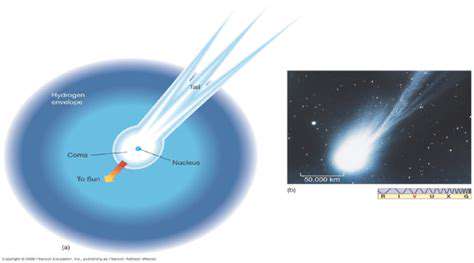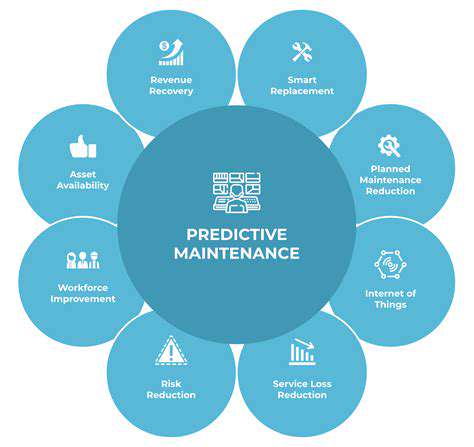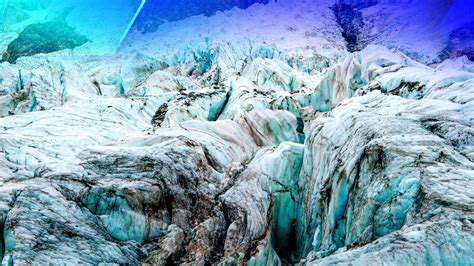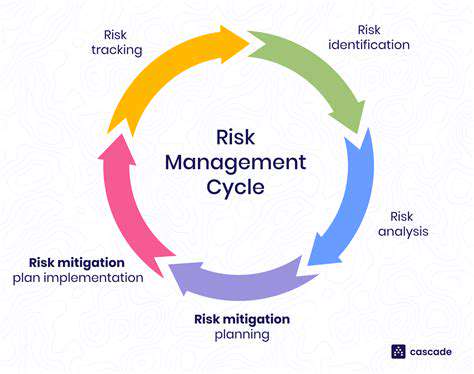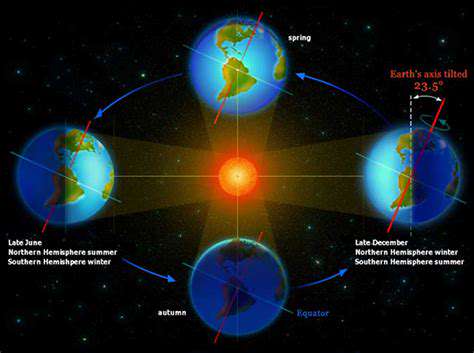
Exploring the Potential for Life
The existence of subsurface oceans on icy moons and other celestial bodies has captivated scientists for decades. These hidden worlds, buried beneath layers of ice, potentially harbor environments drastically different from those on the surface. The possibility of life thriving in these unique conditions is a compelling scientific question, driving ongoing research and exploration. Scientists are actively searching for biosignatures, chemical indicators of past or present life, within these subsurface environments.
Understanding the conditions within these oceans, including factors like temperature, pressure, and chemical composition, is critical to assessing the potential habitability of these environments. The presence of hydrothermal vents, geological features that release heat and chemicals into the surrounding water, could provide energy sources for life, similar to those found on Earth.
Challenges in Detection and Exploration
The sheer distance and the protective layers of ice pose significant challenges to detecting and exploring these subsurface oceans. Direct observation is often impossible, requiring innovative remote sensing techniques and sophisticated instruments. Scientists rely on analyzing subtle gravitational anomalies, magnetic fields, and surface features to infer the presence and properties of these hidden oceans.
Furthermore, the technological hurdles associated with reaching and penetrating these icy layers are immense. Developing robotic probes capable of withstanding extreme pressures and temperatures, as well as the harsh radiation environment, is a major undertaking. Developing new technologies to penetrate the ice and collect data from the ocean below is a crucial part of this exploration.
The Role of Planetary Science
Planetary science plays a vital role in unraveling the mysteries of these subsurface oceans. By studying the geological processes that formed these icy bodies, scientists gain insights into their formation history and the potential for harboring liquid water. Comparative planetology, the study of different planetary bodies, allows for the identification of commonalities and differences in the subsurface ocean environments.
Understanding the interplay between geology, chemistry, and potential biology within these environments is crucial for evaluating the likelihood of life beyond Earth. This knowledge can help us formulate hypotheses about the conditions necessary for life to emerge and thrive in various environments. By studying these subsurface oceans, we are not just exploring other worlds, but also gaining a deeper understanding of our own planet and the universe.
Scientific Missions and Discoveries
Numerous space missions, like the Europa Clipper mission to Jupiter's moon Europa, are dedicated to exploring the subsurface oceans of icy moons. These missions aim to collect data on the composition, structure, and potential habitability of these environments. These missions are pushing the boundaries of technology and expanding our knowledge of the cosmos. The latest discoveries are constantly refining our understanding of these remote and fascinating worlds.
The discoveries made by these missions are not only exciting in themselves but also inspire further research. They stimulate the development of new instruments, methodologies, and theoretical frameworks, fostering a deeper understanding of the universe. These missions are crucial for advancing our understanding of the potential for life beyond Earth.
Future Directions and Implications
Future research will focus on developing more sophisticated tools and techniques for detecting and analyzing subsurface oceans. This includes the development of advanced remote sensing technologies and robotic probes capable of withstanding extreme conditions. Further exploration of these environments will be crucial for understanding the diversity of life in the universe. Understanding the conditions within these oceans will significantly impact our search for extraterrestrial life.
The discoveries made in these explorations will have profound implications for our understanding of planetary formation, the potential for life beyond Earth, and the evolution of life in general. These findings will revolutionize our perspective on the universe and our place within it. This exploration promises to lead to a deeper understanding of the universe's vast potential and the complexity of life forms.


The Future of Ocean World Exploration: Expanding the Search for Life
Exploring the Deep Sea
The deep ocean, a realm largely unexplored, holds the potential for astonishing discoveries. From the crushing pressures of the abyssal plains to the hydrothermal vents spewing chemical riches, these environments may harbor life forms unlike anything we've encountered. Advanced submersibles and remotely operated vehicles (ROVs) are crucial in this exploration, allowing scientists to navigate these treacherous depths and collect vital data about the unique ecosystems that thrive in the darkness.
Innovative technologies, including autonomous underwater vehicles (AUVs), are paving the way for more comprehensive and cost-effective surveys. These robotic explorers can tirelessly map vast areas of the ocean floor, collecting samples and transmitting data back to researchers, significantly expanding our understanding of this hidden world.
The Role of Artificial Intelligence
Artificial intelligence (AI) is rapidly transforming various scientific fields, and ocean exploration is no exception. AI algorithms can analyze vast datasets of oceanographic data, identifying patterns and anomalies that might indicate the presence of life or unique geological formations. This ability to process information at an unprecedented speed and scale will be critical in the future of ocean exploration.
AI-powered image recognition software can be used to identify previously unseen organisms in underwater imagery, opening up new avenues for biodiversity discovery. This automated analysis will free up human researchers to focus on more complex tasks and interpretations.
Advanced Submersible Technology
The development of more sophisticated and resilient submersibles is essential for venturing into the deepest parts of the ocean. These advanced vessels need to withstand immense pressure, operate autonomously for extended periods, and be equipped with cutting-edge sensors and cameras. This technological advancement will unlock previously inaccessible areas, enabling scientists to study these environments in greater detail.
Further improvements in the design and construction of submersibles, coupled with advancements in communication technology, will enhance our ability to monitor and study deep-sea ecosystems in real time. This will create a more nuanced and comprehensive picture of the intricacies of these unique environments.
Expanding the Search for Extraterrestrial Life
The ocean's vastness and the possibility of unique life forms within it make it a prime candidate in the search for extraterrestrial life. Scientists are increasingly looking at the potential for life to exist in environments similar to those found deep within the ocean. The discovery of extremophiles, organisms thriving in extreme conditions on Earth, suggests the possibility of similar life forms existing in extreme environments on other planets or moons.
Environmental Monitoring and Conservation
Ocean exploration isn't just about discovery; it's also about understanding and protecting these vital ecosystems. By studying the ocean's health, we can better understand the impact of human activities on marine life and ecosystems. Developing innovative ways to monitor ocean health and track changes in biodiversity is crucial for the long-term sustainability of our oceans.
The data collected during exploration missions can inform conservation strategies and help protect endangered species and vulnerable marine habitats. This data will be invaluable in developing effective policies and strategies to mitigate the negative effects of human activities on the ocean environment.
Oceanographic Data Management and Accessibility
Managing and accessing the vast amounts of data collected during ocean exploration is a crucial challenge. Creating robust and accessible databases for storing and sharing this information will be essential for future research and collaboration. This will allow scientists and researchers across the globe to access and utilize this information to advance our understanding of the ocean.
Developing standardized protocols for data collection, storage, and analysis will ensure that data collected by various research groups can be effectively integrated and analyzed. This will lead to more comprehensive and reliable insights into the workings of the ocean and its ecosystems.
